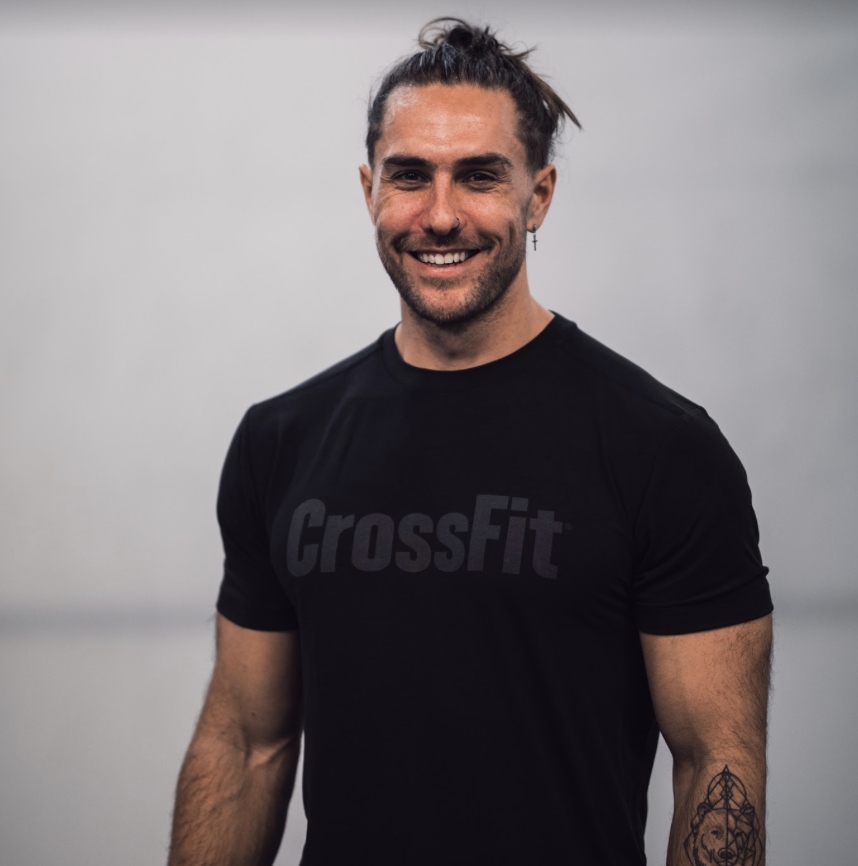HIIT vs CrossFit: which is a better workout?
We’ve looked at the science and enlisted an expert to settle the HIIT vs CrossFit debate


If you’re looking to take your training to new heights, then you may be considering HIIT vs CrossFit and wondering which of those is a better workout.
There are certainly advantages to both training methods, with each one offering a wide variety of health benefits. This means you’re sure to get a great workout if you’re either lacing up a pair of the best cross training shoes or unfurling your exercise mat for a quick HIIT-fix. But which one is right for you?
To find out, we’ve examined a host of scientific studies and enlisted the help of seven-time CrossFit Games competitor Khan Porter.

Khan Porter is one of the world’s top CrossFit athletes, 7x CrossFit Games competitor and a mental health advocate. He is currently studying at The University of Sydney and training to become a counselor.
HIIT vs CrossFit: What is HIIT?
HIIT has become increasingly popular in recent years, particularly during the Covid-19 pandemic. It allows people to squeeze in time-efficient home workouts with minimal equipment. But what exactly is HIIT?
“HIIT stands for high intensity interval training and it refers to typically short bursts of anaerobic exercise, followed by varied periods of rest,” Porter explains. “It is often performed at a very high, near maximal heart rate.”
In other words, you will need to work at an intense level for a set period then spend a short time recovering before embarking on a high intensity period once again.
Want to give it a go or see an example? Perhaps try out this HIIT workout for fat loss, which involves five moves and takes just 25 minutes, but it’s sure to work up a sweat.
Start your week with achievable workout ideas, health tips and wellbeing advice in your inbox.

HIIT vs CrossFit: What is CrossFit?
CrossFit training is slightly harder to define. Due to its varied nature, most workouts involve a mixture of cardio exercise, gymnastics, weightlifting and resistance training.
“CrossFit is ‘functional movements performed at relatively high intensity’ and it can actually incorporate traditional HIIT style workouts into its programming,” Porter says.
“You can think of CrossFit broadly as any type of performance-based training, including strength, aerobic and anaerobic capacity, gymnastics and bodyweight exercises, running, swimming and more.”
Fancy giving it a try? Then our CrossFit for beginners guide is a great way to test the water.

HIIT vs CrossFit: What are the similarities and differences?
Given both CrossFit and HIIT involve performing movements at a high intensity, there are plenty of similarities between the two training methods. Porter says many CrossFit sessions will actually employ the principles of HIIT (short bursts of anaerobic exercise, followed by varied periods of rest) to boost users’ fitness levels.
In a CrossFit gym – or box, as it’s also known – this part of the session is often referred to as a metcon which is short for metabolic conditioning.
But this is only one part of an average CrossFit class. Most coaches will also dedicate a portion of an hour-long session to improving strength through exercises such as the squat. Trainers will also teach skills such as the Olympic lift or gymnastic movements.
By contrast, HIIT is purely about keeping your heart rate up. “As a stand-alone method of training, HIIT is typically focused exclusively on cardio and therefore doesn’t train raw strength, power and skill like CrossFit,” Porter says.
HIIT vs CrossFit: Which is better for weight loss?
Both HIIT and CrossFit are capable of burning calories in a comparatively short time period (when competing against steady-state cardio such as a moderately-paced run). As a result, both can be useful if you’re looking to lose weight, helping you to create a calorie deficit.
“It can be argued that HIIT provides a higher energy expenditure during sessions, as it focuses more on cardio,” says Porter. “However, CrossFit incorporates more strength and resistance training, helping you build muscle which will help burn more fat overall.”
People who have a greater amount of muscle mass will burn more calories at rest, according to the Mayo Clinic. This is because it increases your basal metabolic rate, or the number of calories your body needs to keep you alive each day (not including those burned exercising, eating or otherwise).
HIIT vs CrossFit: Which is better for muscle building?
Both HIIT and CrossFit workouts can also be used to build muscle since they typically involve movements that create sufficient tension and stress in your muscles (the key principles behind hypertrophy, along with adequate protein consumption) which promotes growth.

But, while HIIT just edges it in terms of losing weight, CrossFit takes the top spot when building muscle. It incorporates weighted exercises and strength training, whereas HIIT has a greater focus on cardio.
“CrossFit typically involves more resistance training than HIIT, and is therefore much better overall for building muscle,” says Porter.
HIIT vs CrossFit: Which is the better workout?
So, with the scores tied, how can we decide which is the better workout: HIIT vs CrossFit?
A study published in the British Journal of Sports Medicine highlights the effects of high-intensity interval training on cardiometabolic health. It lists HIIT’s health benefits, finding at least 12 weeks of regular sessions helped people lose body fat, reduce their resting heart rate and lower their blood pressure.
The study also found HIIT can improve your VO2 max, making it a “time-efficient substitute” to moderate-intensity continuous training (such as a steady session on one of the best treadmills).
Do does HIIT win out as the better form of exercise? Not quite.
A systematic review into the benefits and risks of CrossFit published in the American Association of Occupational Health Nurses concluded: “CrossFit is comparable to other high-intensity exercise regimens [such as HIIT] in terms of both injury rates and health outcomes”.
It also states: “CrossFit, just as any other high-intensity training, increases VO2 max, strength, musculature, and endurance. (...) With proper training and incremental increases in intensity, CrossFit can be an effective form of exercise for healthy adults looking for a diverse workout routine.”

Harry Bullmore is a Fitness Writer for Fit&Well and its sister site Coach, covering accessible home workouts, strength training session, and yoga routines. He joined the team from Hearst, where he reviewed products for Men's Health, Women's Health, and Runner's World. He is passionate about the physical and mental benefits of exercise, and splits his time between weightlifting, CrossFit, and gymnastics, which he does to build strength, boost his wellbeing, and have fun.
Harry is a NCTJ-qualified journalist, and has written for Vice, Learning Disability Today, and The Argus, where he was a crime, politics, and sports reporter for several UK regional and national newspapers.